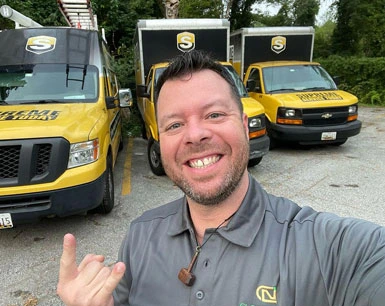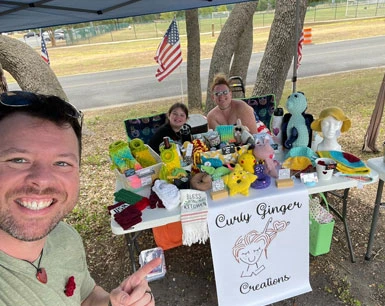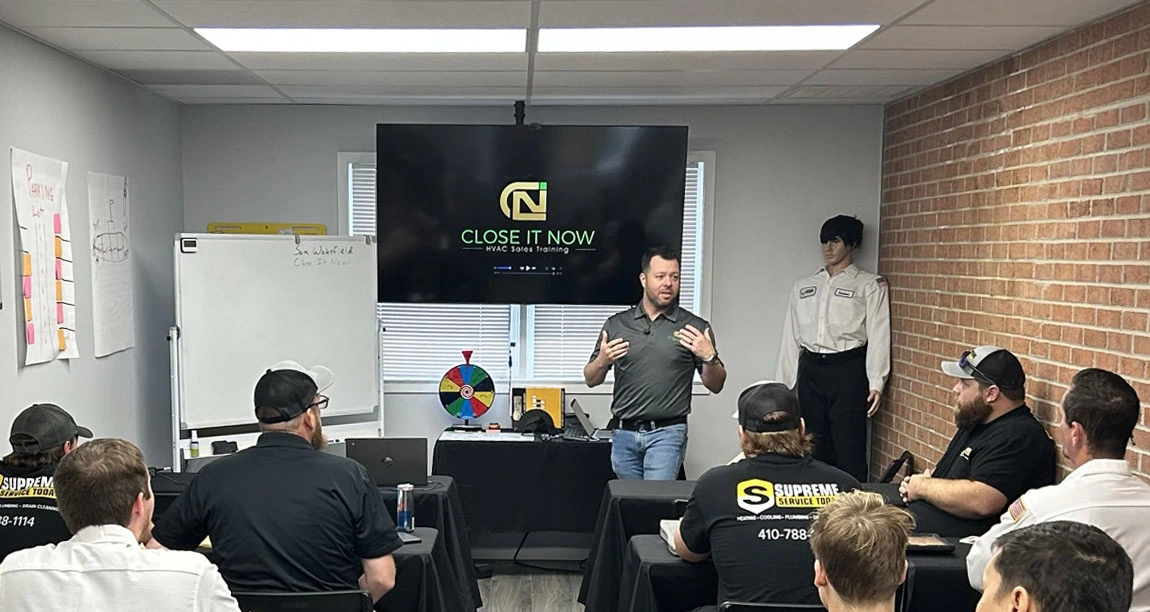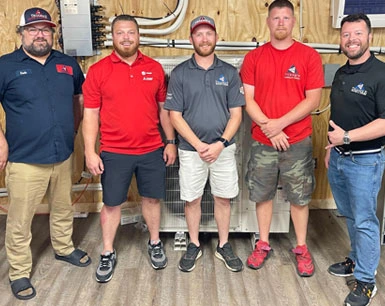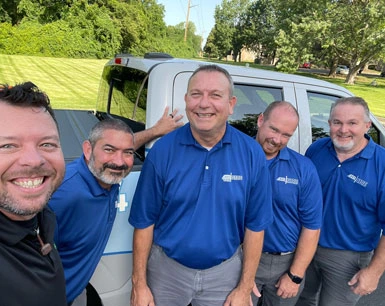Are You Out Of Order?
As salespeople, we have all been to that place where we derail conversations with homeowners. We get so excited of providing solutions they never want in the first place that we waste time and energy. Avoid falling down into this rabbit hole. Sam Wakefield explains why it’s important to ask the questions first before giving out solutions, and not the other way around. Keep things in order and space things out in your sales process so you can stay on track toward your goals.
I’ve got an interesting cool topic. It’s about putting things in the right order. When you are talking to homeowners, have you ever been in a situation, and I’ll actually use an example of what used to happen to me. You sit down at the kitchen table or you are walking around and you are doing your questionnaire. You’re doing the initial interview. You’re in the information–gathering phase of the appointment and going through the questions. You start asking questions about the problems. Instead of going on and letting them tell you about everything and going into the other questions, you stop in the middle of that and start talking about solutions to what they mentioned.
Before you’ve clarified, you get excited, “I’ve seen this before. We fixed it here, here, and here. We can fix it at your home, Mr. Homeowner. This is the solution and here is what we did. I’ve fixed it so many times. There you go.” You finish your investigation phase and several things could happen. One, that could be the solution and that would be awesome but how many of you have experienced this? You get to several more questions. You realize that the problem they brought up, they don’t even care about, it’s a non-issue. You just asked a question and then they answered it.
Derailing Conversations
You speak forever in this explanation about something that they don’t care if it changes or not. You’ve wasted all this time and energy and completely derailed the course of the appointment. You’ve derailed the conversation into no man’s land basically that you didn’t even need to go there. Have you ever had that happen to you? Here is an example. This thankfully hasn’t happened this year because I’ve learned. You learn to get better. You don’t lose. You either win or you learn, so I learned in this situation.
I sat down at the kitchen table, we did the intro, and we did the agenda. I’m going through my questionnaire and then I asked the homeowners about some different situations. It turns out it’s a big two–story house. They’ve got two separate systems: one upstairs and one downstairs. They are contemplating on changing both of them at the same time because of the same age. They’ve both been giving them problems, so they just want to knock them out and get rid of the headaches.
I plunged into this massive conversation about all the technology available now, “With our variable speed modulating equipment, we can do what’s called zoning, where we can take out the two smaller systems, install one big system, and do it as a zone system and overall ask you to be more efficient.” It went down that rabbit trail for twenty minutes. They were like, “This sounds great. This is awesome.” As soon as I started evaluating the house, I realized the upstairs system is in the attic and the downstairs’ indoor system, the furnace and air handler is above the garage, in two wildly separate locations with no way to connect any of the ductwork.
Then I had to spend ten minutes talking, telling them, “Remember everything we talked about? Forget it all. Let’s start over. You are going to have two systems anyway.” One, it was a bad waste of time. Two, it made it look like I didn’t know what I was talking about. Three, obviously they lost some confidence in me that I had to regain. At the big end of it, they were like, “That sounded great, now what?” To cut the circle back to the, “Now what?” let’s go through the same conversation, but we are looking this time at two now. All of it could have been avoided had I just gone through my system, gone through the questionnaire, asked the rest of the questions before I got excited and launched into solutions.
Questions First Before Solutions
The point of this episode is do not talk about the solutions until you’ve asked all the questions. Don’t talk about how you are going to change things and what you are going to do until you’ve asked the questions and you’ve evaluated the house. As you are going through the questionnaire, listen to what they are telling you, and listen with deeper listening, very interactive. Proactive listening is paying attention. Don’t write down any of their answers until they are done speaking, and then write it down. Think about what they are telling you. Think about not only the words they are saying, but think about the emotions surrounding the words they are saying. You can start to pay attention to their energy level as they are telling you about the different things. When they come across something that’s an actual concern, you are going to see their inflection change, you are going to hear it. You are going to see their posture change, their facial features will change because it’s something that’s a concern. It’s not just a response to your question.
Here is a great example. If you are still unsure about something when you are going through your questionnaire, and I use this a lot with rooms that have different temperatures. The question of the questionnaire is, “When some rooms are cool in the summer, are there other rooms that are warmer than the rest?” When you ask that, most of the time you are going to guess. “It’s maybe the office, maybe it’s the kids’ bedroom. It’s a couple of degrees warmer here or there.” If you are unsure if it’s something that is a concern, any vast household, tell me more about it, follow it up with this question. Here is the follow–up, clarifying question to that, “Is that a concern that you are interested in doing something about or is that just an observation that you’ve made? If we didn’t do anything about it, it doesn’t matter. It’s of no consequence.”
Order Of Sales Process: Go through the whole process, ask all the questions, and evaluate fully before you offer solutions.
Ask them that, “Is that a concern or is it just an observation?” Let them answer you. About half the time, I’m finding that they noticed differences in temperature throughout the house but then they followed up with, “Nobody is in that room anyway and it’s never bothered us. The kids used to mention it when they were here but they are gone now,” or you’ll get all different answers. One time, the guy was like, “Her office is always warmer than the rest of the house.” Then she chided in and said, “I like it because I’m always freezing in the rest of the house. Don’t you dare change it?” That’s why the follow–up questions are important once you’ve asked your initial question. Then ask those clarifying deeper questions, “Is it important or are you just making an observation?”
Go through the whole process, ask all the questions, evaluate fully, evaluate the home before you offer solutions because that keeps everything in order. That means you are in data, play these mind games, flip this switch, and just tell yourself, “I’m in data collection mode.” If you are like me, you like to talk a lot. Let me know if you find yourself slipping into those modes of as soon as they bring up something, you know how to fix mainly by just starting talking about it. I find that a lot of people who are technicians like service tax or installers, they came into this industry from straight out being a tech that have a big problem with this. You are so trained and you are so ingrained and that’s how you are wired to fix things. You instantly want to fix things when you come across them.
In the sales process, you’ve got to use a little bit of self-discipline. You’ve got to space it out. That doesn’t mean that you are not going to talk about it. What it does mean is the timing has to be right. You’ve got to find out if it’s important. You’ve got to find out if the solutions that say nine times out of ten fix the problem, make sure this isn’t the house where that won’t work. You’ve done something 100 times and then you go to that very house that you think is built the same and it turns out maybe the framing is different, maybe the way the house is put together is totally different. Your average everyday solution won’t work there. I know we’ve all experienced that. If you haven’t, you haven’t been to enough houses yet because that is totally what’s going on. You’ve got to see more places because you will always come across that unusual building construction, the unusual architecture that’s going to change things. That’s the point of this message. It is to go through the process, ask all of the questions, evaluate the house first before you offer solutions.
Putting Together Bundles
The benefit of that too is you’ve asked the questions and you’ve found out what their concerns are. You’ve found out what they are wanting to accomplish or what the ideal project would look like. Then as you are going through the house, as you are in the attic, you are in the basement, you are in the crawl space, you are in the rooms, you are around the outside, you are doing your due diligence. That’s also the time that you are referring back to where the concerns are. You are formulating your plan of not only how to fix the problem but how to structure it into the right solution to offer them as a package. With these types of sales, you don’t offer twenty single items and ask them if they want to include it, if they all have to go together to fix the problem. You are putting together in your mind and you are making notes, the combination of things they are going to be a solution to their problem. When you do that and you’ve put together this grouping of items, now you’ve got your bundles. People love bundles. You can do bundle pricing and that completely eliminates the apples-to-apples comparison because nobody else is going to be putting together these types of bundles and these packages to solve their problem.
I guarantee no one is going as deep as you are if you use the right questionnaire if you use the right questions, if you use the right forms, or ask the right questions. No one is going as deep as you are when you are doing this, so when you put together all of the solutions, the conversation looks like they may come back with what they want to do. You are like, “Mr. Homeowner, there is no apples-to-apples comparison because the other company is going to replace a box in your house that blows air. What we are doing is we are solving the problems you said you had and fixing these comfort issues in this part of the house and the humidity issues and whatever interware quality comes up.” You’ve put together the packages to fix that.
You can see how there is no real comparison there. What you are comparing is more like apples to sheep or comparing French toast to steak. There is not comparison, it’s not the same thing. That completely eliminates it but you’ve got a bigger project. I’ll tell you this. It’s never about the money. In very few cases, it’s actually about the money. It’s about them being confident that you have the right solution for their problem. It’s about them being confident that you are the right person putting together that solution and you are the right representative for that problem. Be confident that your company, your organization is the right organization. Very seldom does it even have to do with your brand you represent. There are known brands and there are unknown brands but it is much more important to represent the company as that’s what the brand is. It’s your company putting it together. Use this analogy. I’ve actually communicated this to a handful of people.
If you go to Home Depot, you go to Sears and you buy a refrigerator and you bring that refrigerator home and you plug it in and it doesn’t work. You can blame the manufacturer, you can blame the brand because all you had to do was plug it in and it’s going to work or it’s not going to work. This is different. This is like buying a brand spanking new truck, but instead of getting it, driving it all flat, this is like having it delivered to your front yard in 500 boxes. Then it’s up to you to find the company and the person who’s going to put it together properly. That’s why factory training is important because you want to go with the guy that’s missing some teeth and gives you the cheapest price but maybe he’s going to leave a few parts out. Or you want to go with the guy that’s factory–trained and know where every single piece and part goes and why it goes there.
You get the longest life out of your system because at the end of the day, if they’ve offered you what they are telling you is the same project for $2,000, $3,000 or $4,000 less but the system only lasts half as long and you have to do it again in the amount of time that my one system will last, have they really saved you anything? Have they saved you money? Have they saved you time and effort? No. We do it once, we do it right. We take care of it along the way. That’s the conversation when you are putting together these bundles, these packages. You represent the company and you represent your training. If you are proud of the way that you do things with excellence, then you can have the confidence to talk to the homeowner about that on that level. When you have that conversation with a homeowner, regularly you’ll close the deal thousands higher than the next competitor because they know that they are going to get taken care of.
Order Of Sales Process: Ask all your questions, do your due diligence. That way, you don’t get out of order.
You will have people tell you like I get all the time, “Even though you are thousands higher, we chose your organization because we knew we were going to get the flight glove treatment. We knew we were going to get taken care and it was going to be done right. We weren’t going to have the headache of dealing with somebody who only partially do it or they were going to have to be coming back over and over to fix the things that should have been done right the first time.” That’s how you have that conversation. There’s no such thing as an apples-to-apples conversation because you are literally getting her everything delivered to your house in a million pieces and you are choosing the person to put it together for you. Don’t you want to pick somebody that knows what they are doing? That’s the rest of that conversation. It all comes down to asking questions and evaluating the whole project before you offer the solutions. In that investigation, phase is when you put together all of the solutions needed.
Offer Everything
Don’t be scared to offer every single thing in the same house. Most of the time, people may pick an accessory, maybe two accessories, system enhancements, whenever you want to call them, if it’s an air purifier, if it’s an improved air filter, whatever accessory it is, smoke alarm, and smoke detector. Every now and then you’ll have the house that will apply every single thing you offer. They will go with the best system. They’ll go with every indoor quality item available. They will go with depending on where you live, the humidifier or the de-humidifier, they’ll go with the ERV, they’ll go with HRV, they’ll go with whatever it is. They’ll say yes and you love those clients because if you stop offering things, they’ll stop saying yes. Those clients are going to say yes as long as you keep offering things. You have a lot of things you can offer.
The thing with accessories is like the great Wayne Gretzky quote, “You miss all the shots you don’t take.” If you give people something to say no to and give them an option for three of four accessories, there’s a good chance they are going to at least choose one, which is awesome because then that builds your margin. It builds your bottom line because you’ve paid for your overhead with the system that your margin on your system enhances them straight to the bottom lines. That’s a very powerful way to increase your average sales. It is by offering more system enhancements, offer more accessories.
That’s my message. Ask all your questions, do your due diligence before you offer the solutions. That way, you don’t get out of order. That way, you keep your credibility up. That way, you don’t waste their time also. By doing that, you build the biggest bundles, build the bigger packages, then you can have, “There’s no such thing as apples to apples in our industry,” conversation. We all know that 1% of companies are doing this thing because it takes more time and more effort. It’s worth it because that’s when you can see 40% to 70% closer. You can see your average dollar per sale going up and up and the bottom line right in your pocket going up and up because then higher sales means higher percentages, higher commissions. You are keeping mama happy that keeps the babies happy. I tell you like the great Zig Ziglar used to say, “You show me somebody with skinny kids, I’ll show you somebody who is a bad salesman.”
That’s it, we’ve got to take care of the bottom line because that’s the reason we do this. There’s nothing that says you can’t simultaneously serve others with a heart of service and compassion and serve people but also make a fabulous income at the same time. Where else can you walk in a house and walk out an hour later and have a $4,000 commission in an hour? There are not many other places that you can do that. That’s what I love about this industry.
Thanks for reading. We are now in eleven countries all around the world. We are at 1,700 listens, and plays on the podcast at this point. Things are only growing from here so check out CloseItNow.com. That is the place for all the resources. I am actively working on launching my group coaching and a private coaching program that I am launching. If you want to know more about that, reach out with me. We’ll do a discovery call and see if it will be a good fit if one of those programs are going to be a good fit for you to double, triple, or quadruple your sales. Let’s see if you can double, triple your income. Who doesn’t want to double income and make some mind-blowing shifts? That’s what my clients do, so anyway reach out to me at Sam@closeitnow.net. I will talk to you again soon.

